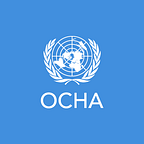Rebuilding lives after floods in Guatemala
Text by Laura Solórzano and Véronique Durroux, OCHA ROLAC
All photos by OCHA/Laura Solórzano
Hurricanes Eta and Iota left a trail of destruction after they hit parts of Central America in November 2020.
Three months on, many communities in Izabal — one of the most affected departments in north-east Guatemala — are still reeling from the impact of floods, as more rains have worsened the situation. Humanitarian teams and local and national authorities have been working together to assist the most vulnerable people.
For the residents of Sioux village, in the Morales municipality, the shock of the floods was unlike anything they have ever experienced. “We are still removing mud from our house because it never stopped raining,” said Sonia Moscoso. “It’s actually gotten worse after the storms, as the soil was so damp.”
Moscoso added: “With Iota, the waters went up to our chest and flooded the entire house. We had never seen floods like these. When tropical storm Agatha struck [in May 2010], the water came inside, but it was little compared to what we got this time, which was all at once, leaving us no time to take anything with us. I just grabbed the kids and left. We’ve lost everything.”
The flooding caused by the two consecutive storms receded, but schools and houses in the affected areas remain filled with mud and debris.
In Central America, climate-related events are frequent and diverse. Guatemala’s so-called Dry Corridor suffers from recurrent droughts, while coastal regions such as Izabal are regularly exposed to storms. Landslides and mudslides following the storms’ torrential rains often have a devastating and lasting impact on communities.
During a visit to Izabal with humanitarian partners in January, OCHA staff found that communities had not recovered from the impact of the December and January rains. As access is still an issue, humanitarian partners must use off-road vehicles while the municipal authorities clear the roads.
OCHA staff met with Juana Valdez, 18, in Morales. She told them that the floods triggered a strong current that destroyed her house, but she and her family were lucky enough to find shelter at a neighbour’s home across the river, where they’ve been living for the past few months. Valdez recalled: “It’s the second storm that destroyed the house. My younger sister almost passed out when she saw what was happening, but as shocked as I was feeling myself, I kept calm and took everyone out.”
As she sat on the porch with her son, mother and siblings, Valdez explained how she misses her old house, and often returns there in the daytime to wash and hang her family’s clothes.
“We don’t forget it’s still our little house,” she added.
A humanitarian team comprising NGOs, the Red Cross, and UN agencies, funds and programmes joined forces with municipal and national authorities to respond to ongoing needs. They ensure there is no duplication in the aid provided.
In January, a joint operation distributed relief items in Sioux village, including food and hygiene kits, drinking water and clothing, from non-governmental organizations (NGOs) Adventist Development and Relief Agency and Refugio de la Niñez.
The team also advocated COVID-19 prevention and engaged in activities involving children of the community. Psychologists from Refugio de la Niñez used storytelling (The Three Little Pigs) and drawing techniques to help the children express how they identify with the story and explore their emotions.
Psychologist Claudia Sandoval explained: “Children don’t perceive the impact of disasters as adults do, even though they are also affected. They try to look at everything in a more positive way. Some explained that they were scared when the houses were flooded, but at the same time they thought that they would have the river closer to go for a swim… in their innocence, they try to see things differently. They are very resilient.”
Anita, 6, participated in the activity. Sitting cross-legged on the floor, she was quiet as she focused on drawing a house. “I’m making the little piggy house but I’m making it with strong bricks, so it won’t fall down for anything,” she explained.
Anita spent more time on this activity than the other children did, as she insisted on drawing each pillar of the house, brick by brick.
The humanitarian team in Izabal is planning more operations in targeted municipalities in the following weeks. For information on the ongoing humanitarian projects in Guatemala, see: http://bit.ly/3rg8zst
